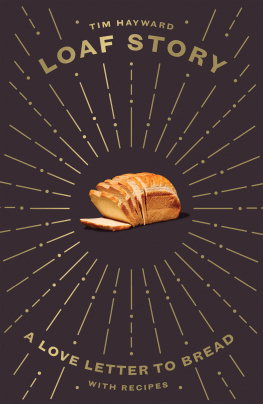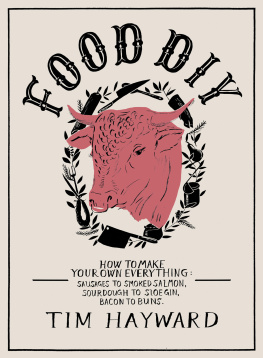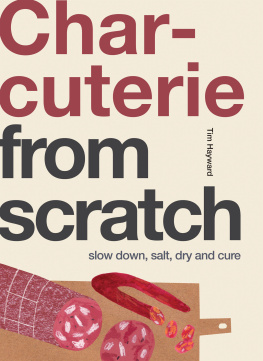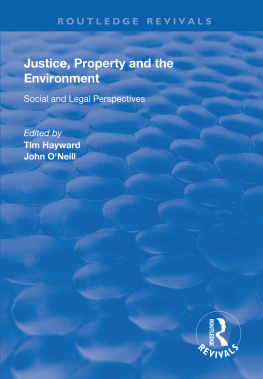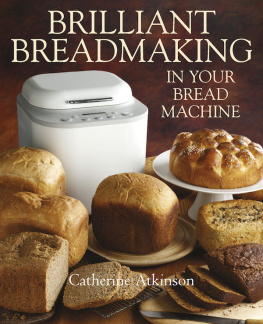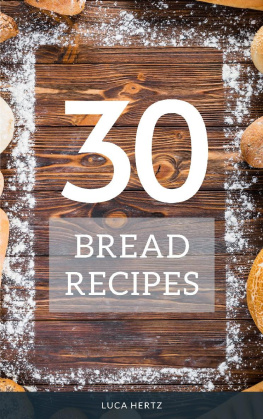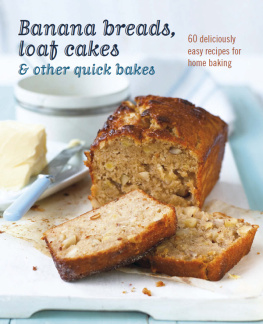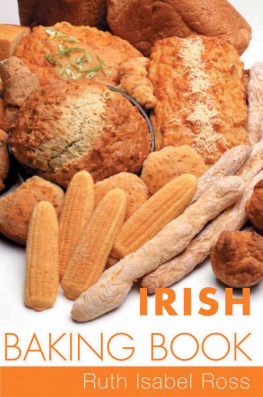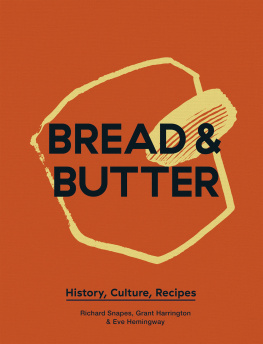Tim Hayward - Loaf Story A Love-Letter to Bread, with Recipes.
Here you can read online Tim Hayward - Loaf Story A Love-Letter to Bread, with Recipes. full text of the book (entire story) in english for free. Download pdf and epub, get meaning, cover and reviews about this ebook. year: 2020, publisher: Quadrille Publishing, Limited, genre: Home and family. Description of the work, (preface) as well as reviews are available. Best literature library LitArk.com created for fans of good reading and offers a wide selection of genres:
Romance novel
Science fiction
Adventure
Detective
Science
History
Home and family
Prose
Art
Politics
Computer
Non-fiction
Religion
Business
Children
Humor
Choose a favorite category and find really read worthwhile books. Enjoy immersion in the world of imagination, feel the emotions of the characters or learn something new for yourself, make an fascinating discovery.
- Book:Loaf Story A Love-Letter to Bread, with Recipes.
- Author:
- Publisher:Quadrille Publishing, Limited
- Genre:
- Year:2020
- Rating:4 / 5
- Favourites:Add to favourites
- Your mark:
- 80
- 1
- 2
- 3
- 4
- 5
Loaf Story A Love-Letter to Bread, with Recipes.: summary, description and annotation
We offer to read an annotation, description, summary or preface (depends on what the author of the book "Loaf Story A Love-Letter to Bread, with Recipes." wrote himself). If you haven't found the necessary information about the book — write in the comments, we will try to find it.
Tim Hayward: author's other books
Who wrote Loaf Story A Love-Letter to Bread, with Recipes.? Find out the surname, the name of the author of the book and a list of all author's works by series.
Loaf Story A Love-Letter to Bread, with Recipes. — read online for free the complete book (whole text) full work
Below is the text of the book, divided by pages. System saving the place of the last page read, allows you to conveniently read the book "Loaf Story A Love-Letter to Bread, with Recipes." online for free, without having to search again every time where you left off. Put a bookmark, and you can go to the page where you finished reading at any time.
Font size:
Interval:
Bookmark:

To my mum, Heather, who instilled in me,
amongst many fine and useful things,
her profound love of bread.
Contents
Theres a single food that Ive eaten every day since I was weaned. Its different most days there are countless ways to make it interesting but that almost doesnt matter, because, God help me, I love it every way it comes.
Some people think of it as a side dish. They think its presence on a separate little plate alongside the main meal means posh. Others believe eating it with every meal is an infallible indicator of social naffness. Like most things in my country, its laden with class significance, from its size to its shape.
But in spite of the fact that its the UKs national staple, it rarely features on menus except as an extra. We still regard it as the defining ingredient of a snack or something informal, grabbed and gobbled. Its been demonised for being mass-produced and for lacking nutritional value at the same time as being so irresistible that its the root cause of our national obesity crisis. At any given time, you can open a newspaper or magazine and read articles about how this food clogs your insides and adds kilos to your outside. There are popular diets that exclude its consumption entirely, yet its so powerful a symbol of who we are and aspire to be that just the smell of it can, apparently, affect our decision on which house we buy. At times its been bad, at times its been good, but never, for a single second, have we fallen out of love with bread.
One of the first meals I can remember, when I was very small and Mum had trouble stretching her budget to feed us, was a slice of supermarket white, fried in carefully saved bacon fat, cut into squares and topped with leftover mash and a blob of ketchup. I have eaten toast in damp flats, caravans, up mountains, in the galleys of boats, in front of roaring fires in impossibly romantic hotels and in thin slices under both foie gras and dripping. At primary school, small, twitchy and neurotic, I had exactly the same sandwich in my lunchbox for nearly two years. It was a talisman of home that could defend me from the nameless terrors of a horrible institution. They thought I was unadventurous; I knew you didnt mess with the only thing that makes you feel loved. As a teenager, as my mother tells it, Id come home from school, start toasting a fresh loaf and not stop till it was gone. Later, George Orwells evocation of the power of tea-and-two-slices as the constant driving fuel of the British working class formed my politics and my food writing.
Bread was the subject of great family tension when I was growing up. My dad was one of three sons in a working-class family, my mum one of the two daughters of a headmaster. For Dad, bread was part of laying the table. A couple of slices of white on the plate, whatever was served, for mopping up any gravy, sauce, juice or other valuable morsel of nourishment. For my grandfather, dad and uncles, eating was a muscular exercise in refuelling with an added layer of competition, and bread was a vital tool and ingredient. If the texture of the meal was right, the sliced bread saw more action than the fork, and if there was ever an occasion when the loaf wasnt there well, Im not sure I can recall it.
Mums family ate bread, too, probably the same brand, but the loaf stayed in the bread bin and never graced the table. You would receive a slice with your dinner if you asked they were kind and indulgent to portly little grandsons and there was no stinting on toast or parsimony when Nan cut a few rounds of sandwiches, but the loaf stayed in the kitchen.
We are class-obsessed as a nation, but usually not so in personal relationships. My parents, starting a family in the thrillingly democratic 1960s, would never have clashed over money, accent, dress or any of the thousand other signifiers by which the Brits define themselves, but bread was different. For Dad, not having bread on the table was a diminution of the generosity even the love demonstrated by his mother. For Mum, it was inappropriate as much of a dishonour to her new familys table as a lump of coal or an oily spanner.
I should probably reiterate here that this is sliced white were talking about. Packaged bread, made with the Process and wrapped in gorgeous wax paper (that was later smoothed out, saved and reused for wrapping up school packed lunches). There were two types: medium or thick sliced. There may have been a thin version as well, but Im sure theres another important class-based reason that I never saw it. Regardless, the key point is that were discussing the significant differences within a class of bread that today wed completely reject. There was no brown bread to be had outside of the rare health-food shops, the French stick was an impossibly exotic speciality that nobody quite understood or trusted and a crusty or farmhouse loaf, from a baker, was a treat. Cutting it yourself meant fewer slices per loaf, so it was explicitly, self-evidently, an indulgent luxury.
For a while, Mum bought Nimble. Somebody, somewhere had worked out that bread was fattening and that bread pumped with even more air would be lighter and therefore slimming. There were TV ads showing thin, glamorous young women drifting above wheat fields in hot-air balloons, just to hammer home the notion that this stuff would make you weightless. This was either the high or the low point of British advertising, depending on your point of view, as the main benefit being sold was the voids in the bread created under a vacuum during processing the most literal case ever of persuading consumers to pay more for absolutely nothing. We all tried it and it was awful but the idea that bread was somehow both bad in its simplest form, and that it might be offered as a remedy, too, was firmly implanted.
Supermarkets began to stock brown bread, wholemeal and granary entered the family repertoire not without resistance and after a while the baguette was revealed to us like a plaster saint to which we could raise our eyes. This was proper bread and, for a brief flash of time, was devoid of any negative connotation.
A while back I found myself in conversation with a brilliant baker. Shes famous in her own country and abroad and has written books on the subject. I admit, drink had been taken and we were comparing notes on the state of baking globally. Do you know what? she said, quite suddenly and with some passion, Im sick of bro bread.
I think I got what she meant the second she said it, but Id never heard it articulated in that way. Half the world has been baking bread and developing their own ways with it since the very beginnings of civilisation, but for food lovers everywhere, and particularly for a new generation of craft bakers, the sine qua non is the bro loaf . Coming out of San Francisco, originating perhaps in the sourdough traditions of Europe, its a big miche with a lacerated dark-baked crust, made from interesting flours and raised with carefully curated, naturally occurring yeasts. Its a truly beautiful thing that, in the imagination at least, would have been at home on any farm table from the Arctic Circle to the southern tip of Spain at any time since the Dark Ages. The problem is that although, compared with mass-produced bread, bro bread is full of character, it has no local cultural relevance and, as my friend insisted with increasing frustration, it distracts bakers from the local breads that do.
Ive no animus against a brilliant craft sourdough. Its delicious. It also has as much connection to my own food culture as sashimi or an excellent Ctes du Rhne and God knows, Id never turn either of those down but Im intrigued by the myths weve built around the bro loaf.
Font size:
Interval:
Bookmark:
Similar books «Loaf Story A Love-Letter to Bread, with Recipes.»
Look at similar books to Loaf Story A Love-Letter to Bread, with Recipes.. We have selected literature similar in name and meaning in the hope of providing readers with more options to find new, interesting, not yet read works.
Discussion, reviews of the book Loaf Story A Love-Letter to Bread, with Recipes. and just readers' own opinions. Leave your comments, write what you think about the work, its meaning or the main characters. Specify what exactly you liked and what you didn't like, and why you think so.

